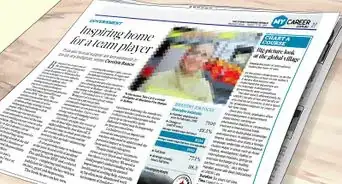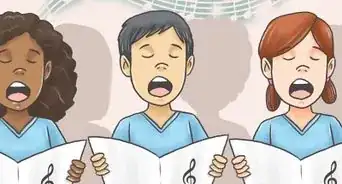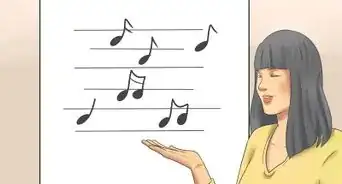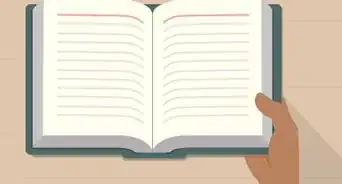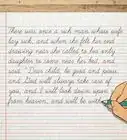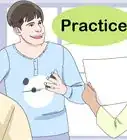This article was co-authored by wikiHow Staff. Our trained team of editors and researchers validate articles for accuracy and comprehensiveness. wikiHow's Content Management Team carefully monitors the work from our editorial staff to ensure that each article is backed by trusted research and meets our high quality standards.
This article has been viewed 34,843 times.
Learn more...
Articles, such as “a,” “an,” and “the,” are an important concept if you are teaching English to speakers of other languages. Although articles may seem like a simple topic, they can be confusing for students, so it’s important to be thorough. Start by introducing your students to articles using review, examples, and simple explanations. Then, engage your students with questions and activities to help them solidify their understanding of articles. Make sure to invite questions throughout the lesson and repeat concepts that are confusing to your students.
Steps
Introducing the Topic
-
1Review examples of nouns and adjectives with your students. In order for your students to recognize articles, they first need to have a firm grasp of nouns and adjectives. Review this concept with them just before you start talking about articles. Show them examples of nouns and adjectives and ask them to come up with some examples of their own.[1]
- For example, you might give examples of nouns, such as “dog,” “girl,” “Paris,” and “keys.”
- Examples of adjectives might include “blue,” “soft,” “loud,” and “crinkly.”
-
2Write “a,” “an,” and “the” on the board or a piece of paper. After reviewing nouns and adjectives, write the 3 articles on the board and read them out loud to your students. Label them as “articles” and explain to your students that, like adjectives, articles help us to describe nouns.[2]
Tip: You might also invite students to say each of the articles out loud at this point. This is a good way to help your students enhance their English speaking skills.
Advertisement -
3Explain that articles indicate if the subject is specific or general. The main function of an article is to indicate if we’re referring to something specific or general. The articles “a” and “an” are called indefinite articles because they may be used to talk about a noun in general, while “the” is a definite article because it refers to a specific subject.[3]
- For example, you might explain to students that you’d use “the” if there was only one of the item you were talking about or if you were talking about a specific subject, such as “the girl,” “the yellow umbrella” or “the garbage can.”
- On the other hand, you can use “a” and “an” in situations when the subject is more general, such as “an umbrella,” “a dog,” or “a book.”
-
4Provide examples of sentences that include articles in them. Write examples on the board or distribute a handout that includes examples in it that you can read with your students. Make sure that your examples include a variety of different uses of articles to show all the different ways they may be used.[4]
- For example, you could include sentences like, “The dog chewed on a bone,” “Sally wants to borrow the black dress I wore last weekend,” and “I’m ordering an appetizer for dinner.”
Explaining When and How to Use Articles
-
1Explain to use “an” when the noun starts with a vowel sound. “A” and “an” are both indefinite articles, but they may be used in different instances depending on the first letter or sound of the noun or adjective the article is coming before. Instruct students to look at the first letter of the adjective or noun and to sound out the word as well. If you need an indefinite article and the word has a vowel at the beginning or makes a vowel sound, use “an.”[5]
- Make sure to explain that some nouns that start with a consonant can still have a vowel sound and require them to use “an.” For example, “hour” and “honor” start with a consonant but make a vowel sound.
- Likewise, there are a few instances where the word may begin with a vowel, but make a consonant sound, such as “university” and “unicorn.”
-
2Show students that plural nouns don’t usually require an article. Unless you are talking about a specific group, you can often omit articles when the noun is plural. Provide several examples of when to use an article with plural nouns and when not to use an article to help them see the differences.[6]
- For example, some examples of when not to use articles might include, “Black bears are native to this region,” “Apples are my favorite fruit,” and “Pink is a stereotypical color for little girls.” These examples all discuss general subjects, not specific groups, so no articles are required.
- On the other hand, examples of when to use articles with plural might include, “The black bears invaded our campsite overnight,” “The apples were delicious,” and “The three little girls all said the color pink was their favorite.”
-
3Explain not to use articles before most geographical nouns. As a general rule, any geographical feature does not require an article. Instruct students to omit articles whenever they are describing a specific country, lake, city, state, street, mountain, or continent. A few exceptions to this rule include:[7]
- Mountain ranges, such as the Rockies and the Andes
- Unusually named mountains, such as the Matterhorn
- Island chains, such as the Aleutians, the Canary Islands, and the Hebrides
-
4Omit articles for nationalities, languages, sports, and academic subjects. Nationalities, such as Chinese, Italian, and German do not require an article. Nor do languages, such as French, Spanish, and Hebrew. You can also omit articles when you are discussing sports, such as hockey, basketball, and baseball, and academic subjects, such as English, Math, and Science.[8]
Tip: One exception to this rule is when you are referring to a nationality as a whole, such as by saying, “The French are known for their artistic accomplishments.”
Engaging Students with Questions and Activities
-
1Give students a handout and ask them to circle the articles. Show the students how to do this with the first example by reading it out loud and circling the articles as you go. Then, give your students time to do this on their own.[9]
- Allow your students about 5-10 minutes to read through all the sentences and circle all of the articles.
-
2Ask students to discuss the differences between the articles. Invite your students to talk with a neighbor or two about the articles and how they change the meaning of each sentence. Then, call on students at random or go around the room to get every student to explain an article and how it affects the meaning of the sentence it is in.[10]
- Allow about 10-15 minutes for this exercise.
-
3Compare English articles to those in the students’ native languages. If you have some familiarity with the articles in your students’ native languages, you could mention them for comparison. This may help to solidify the concept of articles for your students and possibly even make it seem easier if there are more articles in your students’ native languages. [11]
- For example, if your students speak Spanish, then you might list the articles “el,” “la,” “un,” “una,” “los,” “las,” “unos,” and “unas” for comparison.
- This activity would take about 5 minutes to include in your lesson.
-
4Ask students to read sentences that are missing articles to show the difference. Reading through some examples of sentences that are missing articles can also help you to show students why articles matter. Try taking the articles out of a few sentences and writing them on the board. Then, ask a student to read the sentence out loud to show how awkward it sounds.[12]
- For example, you might write something like, “Bear walked to river and caught fish,” or “I wanted sandwich, so I went to store.”
- This activity takes about 5 minutes.
-
5Have students fill in blank spaces with articles. Distribute a worksheet to your students that includes blank spaces where articles should be. Then, instruct your students to fill in the blanks with the correct articles. Collect the worksheets and grade them to assess your students’ understanding of articles and to determine if you need to spend more time on the topic.[13]
- Allow students about 5-10 minutes to complete the worksheet.
Tip: Review the concepts with the whole class if you notice that a large percentage of students still do not understand articles. If there are just a few students who don’t understand, you might meet with them individually to review the concepts and answer questions.
References
- ↑ https://www.grammarly.com/blog/articles/
- ↑ https://www.grammarly.com/blog/articles/
- ↑ https://www.butte.edu/departments/cas/tipsheets/grammar/articles.html
- ↑ https://www.grammarly.com/blog/articles/
- ↑ https://owl.purdue.edu/owl/general_writing/grammar/using_articles.html
- ↑ https://learnenglish.britishcouncil.org/grammar/beginner-to-pre-intermediate/articles-1
- ↑ https://owl.purdue.edu/owl/general_writing/grammar/using_articles.html
- ↑ https://owl.purdue.edu/owl/general_writing/grammar/using_articles.html
- ↑ https://www.education.com/lesson-plan/using-articles-a-an-the/
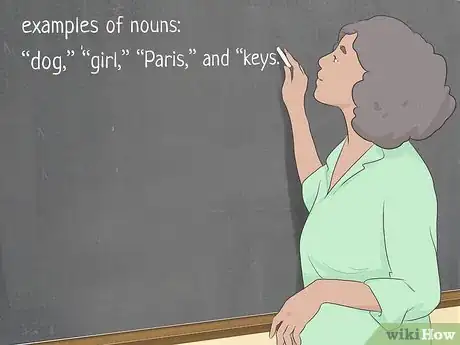
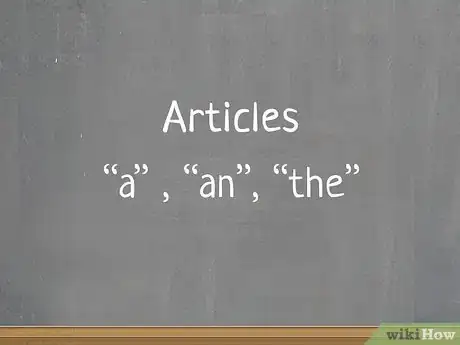
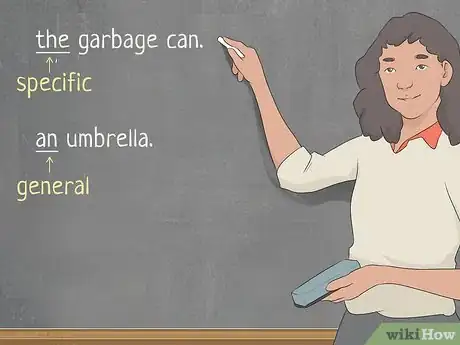
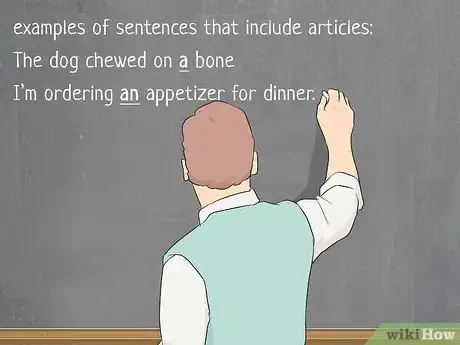
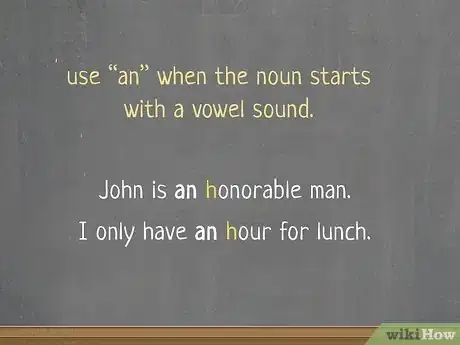
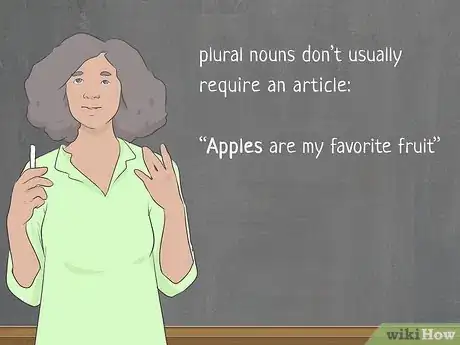
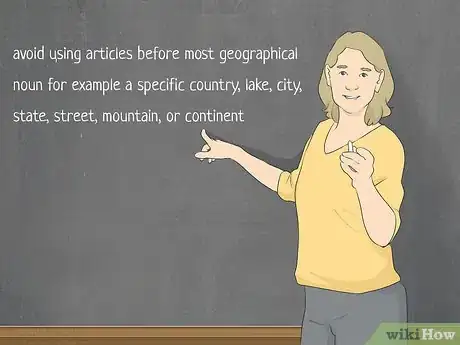
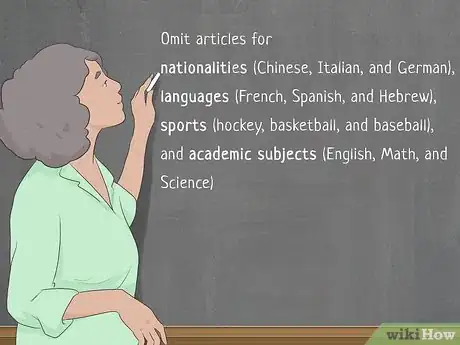
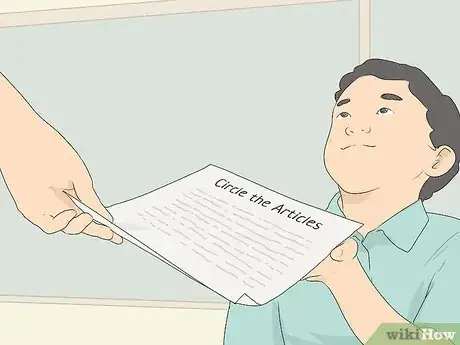
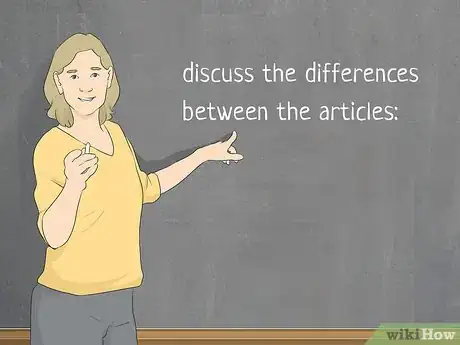
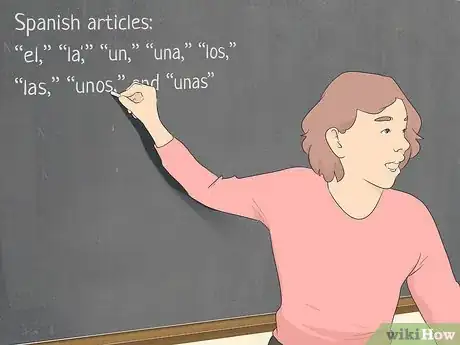
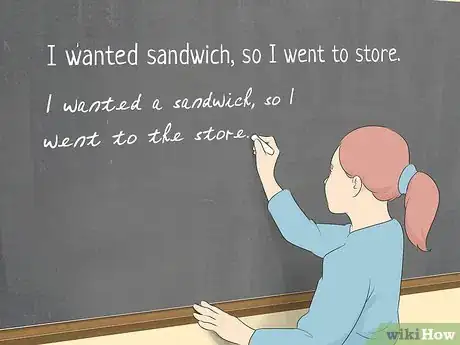
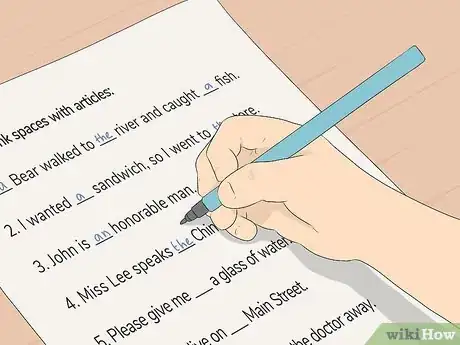



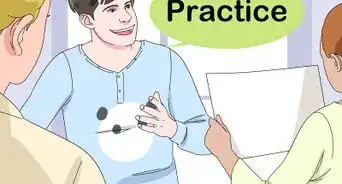
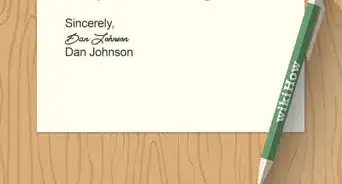
-Step-15.webp)


